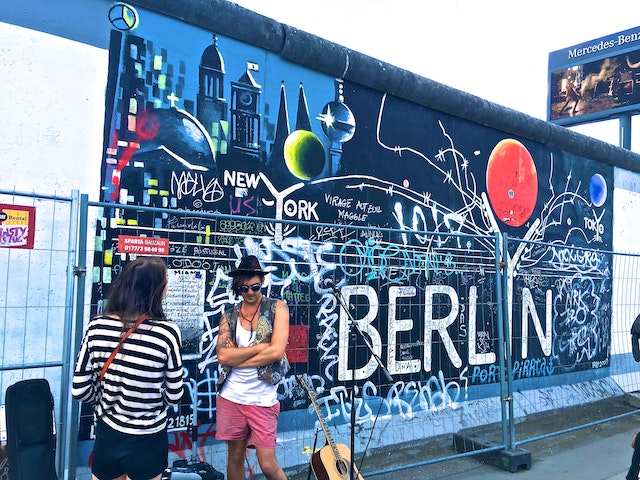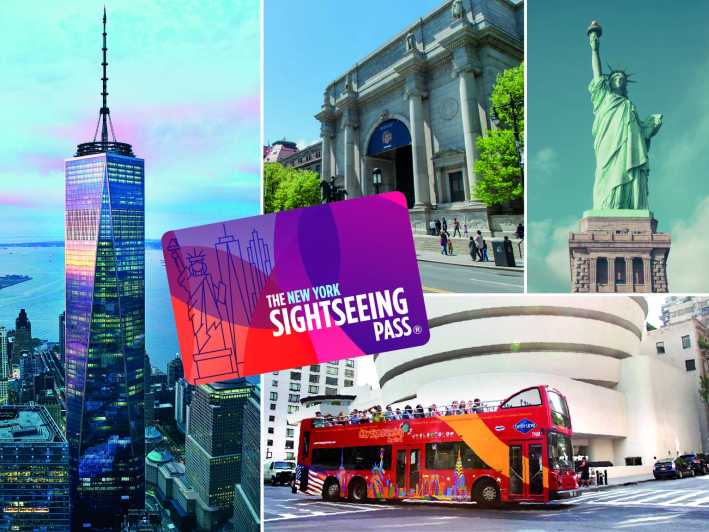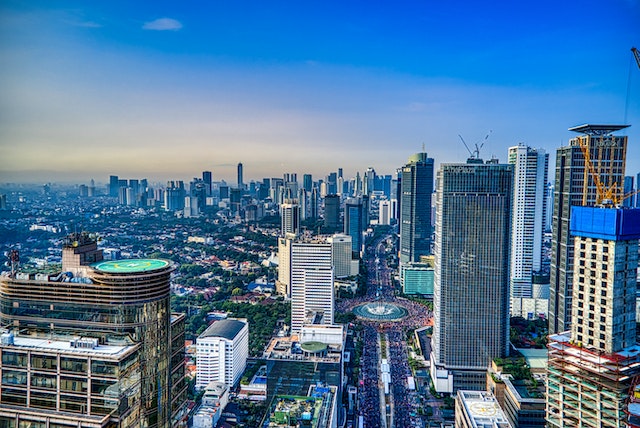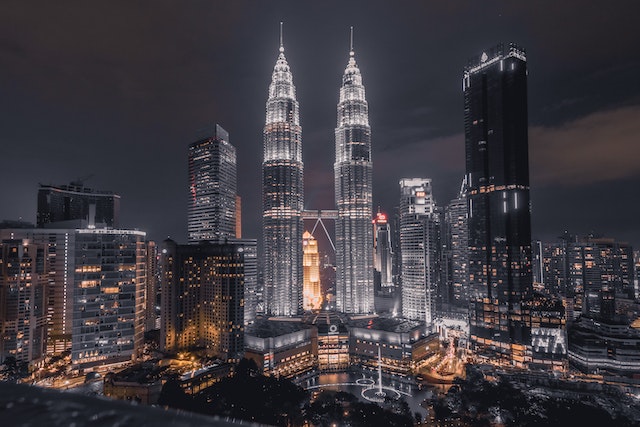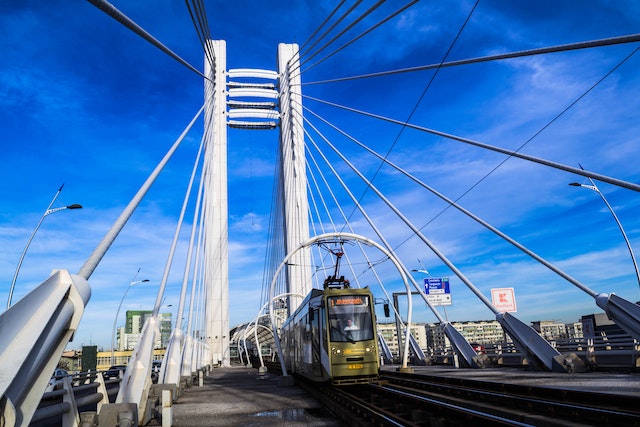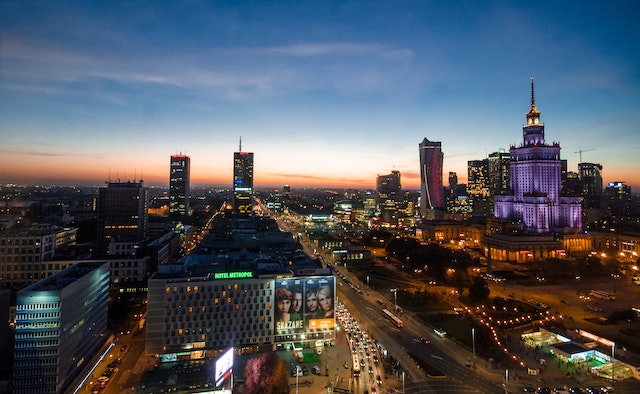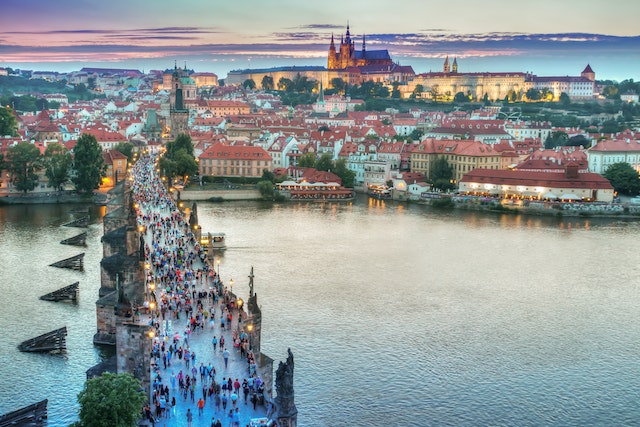Welcome to an exciting journey that will take us from the vibrant city of Atlanta, USA, to the dynamic and culturally rich capital of Germany, Berlin. This travel literary will guide you through a captivating adventure, highlighting the best aspects of both cities, offering insights into their unique histories, attractions, and local customs.
B. Background on Atlanta and Berlin
- Atlanta: Nestled in the heart of Georgia, Atlanta is a bustling metropolis renowned for its rich history, diverse culture, and thriving arts scene. Known as the “Gate City” and “The ATL,” Atlanta serves as a major transportation hub in the southeastern United States. From its pivotal role in the Civil Rights Movement to its modern-day influence in business and technology, Atlanta has evolved into a city that seamlessly blends tradition with innovation.
- Berlin: As the capital of Germany, Berlin stands as a symbol of resilience, reunification, and cultural diversity. The city is steeped in history, marked by the scars of World War II and the Cold War, yet has risen as a beacon of artistic expression, architectural wonder, and progressive ideologies. Berlin’s eclectic neighborhoods, world-class museums, and pulsating nightlife attract visitors from around the globe, making it a vibrant and ever-evolving European destination.
In this travel literary, we will embark on a journey that will take us from the southern charm of Atlanta to the captivating allure of Berlin. Get ready to explore the unique landscapes, history, and traditions of these two remarkable cities, and let the adventure begin!
Choosing the Best Airline
A. Comparison of Airlines Flying from Atlanta to Berlin
When embarking on a journey from Atlanta to Berlin, selecting the best airline is crucial to ensure a comfortable and enjoyable travel experience. Let’s compare the airlines offering flights on this route and explore the factors that can influence our decision.
- Delta Air Lines: As one of the major carriers based in Atlanta, Delta offers direct flights from Hartsfield-Jackson Atlanta International Airport (ATL) to Berlin Brandenburg Airport (BER). Known for its extensive network and excellent customer service, Delta provides a reliable option for travelers seeking a convenient and smooth journey.
- Lufthansa: Germany’s flagship carrier, Lufthansa, also operates direct flights from Atlanta to Berlin. Renowned for its premium service and modern fleet, Lufthansa ensures a comfortable and well-rounded travel experience, especially for those looking to experience a touch of German hospitality from the moment they board the flight.
- British Airways: While not based in Atlanta, British Airways provides connecting flights from Atlanta to Berlin via London Heathrow Airport (LHR). With a strong reputation for its global network and premium services, British Airways is an excellent choice for travelers who don’t mind a layover in London.
B. Factors to Consider: Price, Comfort, Amenities, and Layover Duration
- Price: The cost of the airline ticket is often a significant consideration for travelers. Comparing prices across different airlines and fare classes can help us find the most budget-friendly option that fits our travel preferences.
- Comfort: Long-haul flights can be tiring, so the level of comfort offered by the airline is essential. Look for factors such as seat pitch, legroom, and in-flight entertainment options to ensure a pleasant journey.
- Amenities: Airlines may vary in terms of amenities provided on board, such as meal offerings, Wi-Fi availability, and additional services. Travelers with specific preferences, such as dietary restrictions or the need for internet access, should consider these amenities while choosing an airline.
- Layover Duration: For those opting for connecting flights, the layover duration can significantly impact travel time and overall convenience. Opting for shorter layovers allows for smoother connections and reduces the risk of delays.
In conclusion, choosing the best airline for our trip from Atlanta to Berlin involves weighing factors such as price, comfort, amenities, and layover duration. Whether we prioritize direct flights for convenience or opt for connecting flights to find the best deal, making an informed decision will ensure a delightful start to our journey to the captivating capital of Germany.
Best Day of the Week to Travel
A. Analysis of Flight Prices and Availability on Different Days
When planning our journey from Atlanta to Berlin, it’s essential to consider the flight prices and availability on different days of the week. Airlines often adjust ticket prices based on demand, making some days more favorable than others in terms of cost and availability.
- Weekdays (Tuesday to Thursday): Traditionally, weekdays tend to have lower demand for travel, leading to potential cost savings on airline tickets. Flights on Tuesdays, Wednesdays, and Thursdays are often less expensive compared to weekends.
- Weekends (Friday to Monday): Fridays and weekends generally see higher demand for travel, especially for leisure trips. As a result, flight prices may be higher during these days, and availability could be limited due to increased bookings.
B. Recommendations for the Most Convenient and Cost-Effective Day
Based on the analysis of flight prices and availability, the most convenient and cost-effective day to travel from Atlanta to Berlin would be a weekday, specifically Tuesday or Wednesday. Here’s why:
- Cost Savings: Traveling on a Tuesday or Wednesday can often result in lower airfares, allowing us to save on the overall cost of the trip. These days typically have less demand, leading to more competitive prices.
- Ample Availability: Choosing a weekday flight also increases the likelihood of finding a variety of flight options with convenient departure and arrival times. This can provide more flexibility in planning our itinerary.
- Avoiding Weekend Rush: Traveling mid-week allows us to avoid the weekend rush at airports and experience a smoother check-in process and boarding experience.
- Extended Stay: If we plan a 5-7 day trip to Berlin, departing on a Tuesday or Wednesday would provide an opportunity for a longer stay, as we can take advantage of the more affordable fares and spend more time exploring the captivating city.
In conclusion, for a convenient and cost-effective journey from Atlanta to Berlin, we recommend considering flights on Tuesdays or Wednesdays. Not only can we enjoy potential cost savings, but also have a wider selection of flight options and the chance to savor more days in the vibrant and culturally rich capital of Germany.
Busy Times and Layovers
A. Peak Travel Seasons and Their Impact on Flight Availability
When planning our journey from Atlanta to Berlin, it’s essential to be aware of peak travel seasons, as they can significantly impact flight availability and prices. Peak seasons are periods when a destination experiences a surge in tourists, leading to higher demand for flights and limited availability. Here are the peak travel seasons for Berlin and their implications on flight availability:
- Summer Peak (June to August): The summer months are a popular time to visit Berlin, with pleasant weather and various outdoor events and festivals. However, this popularity also means that flight availability may be limited, and ticket prices can be higher than during off-peak seasons. It’s advisable to book flights well in advance if planning a summer trip to Berlin.
- Christmas and New Year Holidays (December to early January): The festive season is another peak travel period for Berlin, with visitors eager to experience the city’s enchanting Christmas markets and celebrations. Flights during this time can be in high demand, and travelers should secure their tickets early to avoid disappointment.
B. Layover Options and Their Implications on Overall Travel Time
When choosing flights from Atlanta to Berlin, travelers may have the option of direct flights or flights with layovers in other cities. Here are the implications of different layover options on overall travel time:
- Direct Flights: Opting for a direct flight from Atlanta to Berlin offers the most efficient and time-saving travel experience. With no layovers, travelers can arrive in Berlin without any stopovers, making this the most straightforward option, particularly for those looking to reach their destination quickly.
- Connecting Flights: Connecting flights may offer more affordable options, especially if booked well in advance. However, they also extend the overall travel time. The duration of layovers can vary, ranging from a few hours to longer periods, depending on the airline and the chosen route. Travelers should consider the layover duration when comparing flight options, as a longer layover may lead to a more extended journey.
When navigating busy times and layovers, it’s crucial to strike a balance between cost and convenience. Booking flights during off-peak seasons can lead to potential cost savings, while selecting direct flights or shorter layovers can help minimize overall travel time. Regardless of the chosen travel period, proper planning and booking in advance can enhance the overall travel experience and ensure a smooth journey from Atlanta to the captivating city of Berlin.
Travel Time and Itinerary
A. Total Travel Time from Atlanta to Berlin
The total travel time from Atlanta to Berlin depends on several factors, including the airline, layovers, and the chosen flight route. Typically, direct flights from Hartsfield-Jackson Atlanta International Airport (ATL) to Berlin Brandenburg Airport (BER) take approximately 9 to 10 hours. However, flights with layovers can extend the travel time significantly.
For flights with layovers, the duration will vary based on the layover destination and duration. Layovers can add several hours to the journey, depending on the connecting city and the waiting time between flights.
B. Recommended 5-7 Day Itinerary for Exploring Berlin
Berlin is a vibrant city with a rich history, diverse culture, and a wealth of attractions to explore. Here’s a recommended 5-7 day itinerary to make the most of your time in this captivating capital of Germany:
Day 1: Arrival in Berlin
- Check into your accommodation and freshen up.
- Head to Alexanderplatz to experience the lively atmosphere and iconic TV Tower.
- Visit the nearby Nikolaiviertel, Berlin’s oldest historic quarter, for a glimpse of its medieval charm.
- Enjoy a traditional German meal at a local restaurant.
Day 2: Historical Berlin
- Begin the day at the Brandenburg Gate, an iconic symbol of Berlin’s unity and history.
- Explore the sobering yet essential Holocaust Memorial and the adjacent Jewish Museum.
- Visit the Reichstag Building and take in the city views from its stunning glass dome (pre-booking required).
- Walk along the East Side Gallery, a section of the Berlin Wall covered in colorful murals.
Day 3: Museums and Culture
- Spend the morning at Museum Island, home to world-class museums like the Pergamon Museum and Neues Museum.
- Visit the Berlin Cathedral and enjoy a leisurely stroll along the nearby Lustgarten park.
- In the evening, catch a show at one of Berlin’s theaters or concert halls.
Day 4: Potsdam Day Trip
- Take a day trip to Potsdam, a charming city just outside Berlin known for its palaces and gardens.
- Explore Sanssouci Palace, the summer residence of Frederick the Great, and its stunning terraced gardens.
- Visit Cecilienhof Palace, where the Potsdam Conference took place in 1945.
Day 5: Modern Berlin
- Visit the impressive TV Tower at Fernsehturm Berlin for panoramic views of the city.
- Explore the vibrant neighborhood of Kreuzberg, known for its diverse culture and street art.
- Spend the afternoon at the Berlin Zoological Garden, one of the oldest and most extensive zoos in the world.
Day 6: Parks and Gardens
- Start the day at Tiergarten, Berlin’s largest and most famous park. Enjoy a peaceful walk or rent a bike to explore its vast greenery.
- Visit Charlottenburg Palace, a stunning baroque palace surrounded by beautiful gardens.
- Head to the trendy district of Prenzlauer Berg for shopping and dining in chic cafes.
Day 7: Departure from Berlin
- Take a relaxing morning stroll along the Landwehr Canal.
- If time permits, visit any attractions you may have missed or do some last-minute souvenir shopping.
- Bid farewell to the fascinating city of Berlin and board your flight back to Atlanta.
This itinerary provides a balanced mix of history, culture, art, and leisure, offering a comprehensive experience of Berlin’s diverse offerings. Of course, feel free to adjust the itinerary based on your interests and preferences to make your trip to Berlin a truly memorable and enriching experience.
Weather and Seasonal Considerations
A. Overview of Berlin’s Climate Throughout the Year
Berlin experiences a temperate climate with distinct seasons. The city’s weather is influenced by its continental location, resulting in warm summers and cold winters. Here’s an overview of Berlin’s climate throughout the year:
- Spring (March to May): Spring in Berlin brings milder temperatures, with average highs ranging from 9°C to 17°C (48°F to 63°F). It is a pleasant time to visit, as parks and gardens come alive with blooming flowers, and outdoor activities become more enjoyable.
- Summer (June to August): Summers in Berlin are warm, with average highs reaching 20°C to 25°C (68°F to 77°F). July and August are the hottest months, making it an ideal time for outdoor events, festivals, and exploring the city’s green spaces.
- Autumn (September to November): Autumn brings cooler temperatures and colorful foliage to Berlin. Average highs range from 14°C to 18°C (57°F to 64°F). It’s a beautiful time to explore the city’s parks and experience seasonal events.
- Winter (December to February): Berlin’s winters are cold, with average highs ranging from 2°C to 5°C (36°F to 41°F). Snowfall is common, creating a picturesque winter wonderland. It’s a great time to visit if you enjoy Christmas markets and winter activities.
B. What to Expect During Your Specific Travel Dates
To provide more precise information about the weather during your specific travel dates, please provide the month or season of your planned visit to Berlin. With this information, we can offer a more detailed outlook on what you can expect during your trip.
C. Seasonal Events and Festivals to Look Out For
- Christmas Markets (Late November to December): Berlin is renowned for its enchanting Christmas markets, where you can savor seasonal treats, shop for handicrafts, and soak in the festive atmosphere.
- Berlinale – Berlin International Film Festival (February): If you’re visiting in February, don’t miss the Berlinale, one of the most significant film festivals in the world, featuring a diverse selection of international films.
- Karneval der Kulturen (Carnival of Cultures) (Late May to Early June): This multicultural street festival celebrates diversity with parades, music, dance, and culinary delights from around the world.
- Fête de la Musique (June): On June 21st, Berlin hosts Fête de la Musique, an open-air music festival with free performances taking place all over the city.
- Berlin Marathon (September): Witness one of the world’s major marathons as athletes from around the globe take to the streets of Berlin for this thrilling sporting event.
Regardless of the season you choose to visit, Berlin’s vibrant cultural scene, historical landmarks, and seasonal events ensure a memorable experience. So, be prepared to immerse yourself in the city’s charm, no matter the time of year.
Customs and Cultural Tips
A. Common Customs and Etiquettes in Germany
Germany, including Berlin, has its own set of customs and etiquettes that visitors should be aware of to ensure respectful interactions with locals. Here are some common customs:
- Greetings: A firm handshake is the standard form of greeting in Germany. When addressing someone, use their title and last name until invited to use their first name.
- Punctuality: Germans value punctuality, so it’s essential to arrive on time for appointments, meetings, and social gatherings.
- Personal Space: Germans typically appreciate personal space. Avoid standing too close to someone during conversations, and maintain a reasonable distance in public places.
- Respect for Quietness: Germans often value silence and tranquility, especially in public transport and public spaces. Keep conversations and noise levels at a considerate volume.
- Table Manners: When dining, wait for everyone to be served before starting to eat. Also, remember to say “Guten Appetit” (enjoy your meal) before eating.
- Tipping: Tipping is common in Germany, but not as extensively as in some other countries. A 5-10% tip is customary in restaurants if you were satisfied with the service.
B. Tips on Interacting with Locals and Understanding Cultural Norms
To have positive interactions with locals and gain a better understanding of German culture, consider the following tips:
- Speak Basic German: While many Germans speak English, learning a few basic German phrases will be appreciated and can help facilitate interactions.
- Be Direct and Clear: Germans value straightforward communication. Be clear in your words and intentions during conversations.
- Recycling and Environment: Germany is known for its commitment to environmental sustainability. Take note of recycling rules and practices and be mindful of conserving resources.
- Cash Payments: While credit cards are widely accepted, some smaller establishments may prefer cash payments. Always carry some cash with you.
- Photography: Be respectful when taking photos in public spaces, especially in areas of historical significance or places of worship.
C. Local Customs Unique to Berlin
Berlin has its own unique customs and cultural aspects. Here are some local customs to be aware of while visiting the city:
- Ampelmann: Keep an eye out for the iconic “Ampelmann” pedestrian traffic lights, a beloved symbol of East Berlin, which can be found at various pedestrian crossings.
- Currywurst: Berliners take pride in their love for currywurst, a local delicacy of sausage served with curry ketchup and spices. Trying this dish is a must for food enthusiasts.
- Sunday Quiet: Sundays are generally quiet in Berlin, with many shops and businesses closed. It’s a day when locals often spend time with family or relax in parks.
- Grafitti and Street Art: Berlin is known for its vibrant street art scene, especially in neighborhoods like Kreuzberg and Friedrichshain. Appreciate and respect the city’s street art culture.
By embracing these customs and cultural tips, you’ll find that your interactions with locals will be more rewarding, and your overall experience in Berlin will be enriched. Embracing the local customs allows you to connect with the city and its residents on a deeper level, creating lasting memories of your time in this dynamic and historically significant metropolis.
Packing Guide
A. Appropriate Clothing for the Current Weather
When packing for a trip to Berlin, it’s essential to consider the current weather and seasonal conditions. Here are some clothing items to pack based on the time of your visit:
- Spring (March to May): Pack light layers for the mild temperatures. Include long-sleeved shirts, a light jacket or sweater, comfortable jeans or trousers, and a waterproof outer layer for possible showers.
- Summer (June to August): Berlin summers can be warm, so pack lightweight and breathable clothing. Bring t-shirts, shorts, sundresses, and sandals. Don’t forget a wide-brimmed hat, sunglasses, and sunscreen for protection against the sun.
- Autumn (September to November): The fall weather can be cool, so pack long-sleeved shirts, sweaters, and a medium-weight jacket or coat. Consider bringing scarves and gloves as the season progresses.
- Winter (December to February): Winters in Berlin are cold, so pack warm layers such as thermal tops, sweaters, and insulated jackets. Include a cozy hat, gloves, and a scarf to keep warm, and don’t forget a pair of sturdy waterproof boots to handle potential snow or slush.
B. Essentials to Bring for Exploring the City
Regardless of the season, certain essentials are crucial for a comfortable and enjoyable exploration of Berlin:
- Comfortable Walking Shoes: Berlin is a city best explored on foot, so bring comfortable walking shoes to navigate its streets, parks, and neighborhoods.
- Daypack or Crossbody Bag: A daypack or crossbody bag will be handy for carrying essentials like a water bottle, camera, map, and small snacks during your explorations.
- Travel Adapter: Berlin uses the Europlug Type C and Type F electrical outlets. Bring a travel adapter to charge your electronic devices.
- Travel Documents: Don’t forget your passport, ID, visa (if required), and travel insurance documents.
- Language Guide: While many Berliners speak English, having a pocket-sized language guide or a translation app can be helpful in certain situations.
C. Special Considerations for Specific Activities or Events
Depending on your planned activities or events, consider packing the following:
- Museum Visits: Pack a small foldable umbrella for unexpected rain, as some museums may have coat check facilities that can get crowded during wet weather.
- Festivals or Events: Check the event’s dress code and consider packing appropriate attire. For music festivals, bring earplugs to protect your ears.
- Swimming: If you plan to swim, pack a swimsuit and a compact beach towel for a visit to one of Berlin’s lakes or swimming pools.
- Christmas Markets: If visiting during the holiday season, bring warm clothing, including a hat, gloves, and a scarf, for strolling through festive Christmas markets.
By packing appropriately for the weather, bringing essential items for city exploration, and considering specific activities or events, you’ll be well-prepared to make the most of your trip to Berlin. Remember to pack light and leave some space for any souvenirs or items you may acquire during your travels. Happy packing and enjoy your time in the captivating city of Berlin!
Unmissable Attractions in Berlin
A. Iconic Landmarks
- Brandenburg Gate: One of Berlin’s most iconic landmarks, the Brandenburg Gate is a neoclassical triumphal arch that symbolizes unity and freedom. Located in Pariser Platz, it is a must-visit and often serves as a focal point for events and celebrations.
- Berlin Wall: A visit to the Berlin Wall is a poignant reminder of the city’s history. The East Side Gallery, a preserved section of the Wall covered in vibrant murals, offers a powerful representation of freedom and creativity.
- Reichstag Building: The Reichstag is the German parliament building and features a stunning glass dome. Visitors can ascend to the dome’s rooftop terrace for panoramic views of Berlin’s skyline.
B. Must-Visit Museums and Art Galleries
- Museum Island: Located on the Spree River, Museum Island is home to five world-renowned museums. Don’t miss the Pergamon Museum, Neues Museum, Altes Museum, Bode Museum, and Alte Nationalgalerie, each offering a unique collection of art and historical artifacts.
- DDR Museum: This interactive museum provides insights into life in East Germany during the Cold War era, offering a hands-on experience of daily life in the German Democratic Republic.
- Gemäldegalerie: The Gemäldegalerie houses one of the most exceptional collections of European paintings from the 13th to the 18th centuries, including works by artists such as Rembrandt, Vermeer, and Titian.
C. Recommended Neighborhoods to Explore
- Kreuzberg: Known for its vibrant street art scene, multicultural ambiance, and bustling nightlife, Kreuzberg is a must-visit neighborhood. It’s an excellent place to explore cafes, bars, and unique shops.
- Mitte: The central district of Mitte is home to many historical sites, including Museum Island, the Berlin Cathedral, and Alexanderplatz. It’s a great starting point for exploring the city’s landmarks.
- Prenzlauer Berg: This trendy and family-friendly neighborhood boasts charming streets, boutiques, and an array of cafes. Mauerpark, known for its Sunday flea market and open-air karaoke, is a popular attraction here.
Berlin’s rich history, diverse culture, and vibrant neighborhoods offer an array of unmissable attractions. Whether you’re exploring iconic landmarks, immersing yourself in art and history, or discovering local life in the city’s neighborhoods, Berlin promises an unforgettable experience. Take the time to embrace the city’s unique blend of past and present, and you’ll discover why Berlin captivates the hearts of travelers from around the world.
Hidden Gems and Offbeat Experiences
A. Lesser-Known Attractions and Places to Escape the Crowds
- Teufelsberg: Venture to Teufelsberg, an abandoned Cold War listening station atop an artificial hill made from World War II rubble. The site offers stunning panoramic views of Berlin’s skyline and is an offbeat destination for urban explorers and photography enthusiasts.
- C/O Berlin: Escape the crowds at C/O Berlin, a contemporary art gallery that showcases captivating photography exhibitions. Located in a former Postfuhramt (postal office), this hidden gem is a sanctuary for art lovers seeking thought-provoking visual experiences.
- Viktoriapark and Kreuzberg Hill: For a peaceful retreat, head to Viktoriapark in Kreuzberg. Climb to the top of Kreuzberg Hill for scenic views of the city and relax in the park’s cascading waterfall.
B. Unique Activities to Delve into Berlin’s Subcultures
- Street Art Tour: Join a street art tour in neighborhoods like Friedrichshain or Kreuzberg to discover the vibrant and ever-changing street art scene. Local guides will provide insight into the artists and the stories behind the murals.
- Clubbing in Berghain: Known for its legendary status in the techno scene, Berghain is an iconic nightclub. It’s not just a club; it’s a cultural phenomenon. Experience Berlin’s renowned nightlife and immerse yourself in its unique subculture.
- Turkish Market at Maybachufer: Visit the Turkish Market along Maybachufer in Neukölln on Tuesdays and Fridays. Experience a slice of Berlin’s multiculturalism through the market’s lively atmosphere, offering fresh produce, food stalls, and artisanal goods.
- East Side Music Days: If you’re in Berlin during the East Side Music Days (usually in August), explore the vibrant Friedrichshain neighborhood as it comes alive with live music performances, street food, and local musicians.
Berlin’s hidden gems and offbeat experiences offer a chance to delve deeper into the city’s subcultures and lesser-known attractions. As you explore these hidden corners, you’ll uncover the diverse and dynamic soul of Berlin, making your journey even more enriching and memorable. Embrace the unconventional and unexpected, and you’ll discover the true essence of this captivating city beyond the well-trodden tourist paths.
Local Cuisine and Dining Recommendations
A. Traditional German Dishes to Try in Berlin
Berlin’s culinary scene offers a delightful array of traditional German dishes that are not to be missed. Here are some must-try dishes during your stay in the city:
- Currywurst: Berlin’s beloved street food, currywurst, is a sliced pork sausage smothered in curry ketchup and sprinkled with curry powder. It’s often served with fries or a bread roll, making it a quick and tasty meal.
- Schnitzel: Indulge in a classic Wiener Schnitzel, a breaded and pan-fried veal or pork cutlet. Served with a squeeze of lemon, it’s a staple dish in many German restaurants.
- Eisbein: For a hearty meal, try Eisbein, a pickled and boiled pork knuckle, typically served with sauerkraut and boiled potatoes.
- Königsberger Klopse: These tender meatballs, made from a mix of ground pork and beef, are served in a creamy caper sauce with boiled potatoes.
- Sauerbraten: A pot roast marinated in a mix of vinegar, wine, and spices, Sauerbraten is a flavorful and tender German dish, usually served with red cabbage and potato dumplings.
B. Popular Restaurants and Street Food Options
- Markthalle Neun: This historic market hall in Kreuzberg offers a variety of street food stalls, artisanal products, and local specialties. Don’t miss the Street Food Thursday event for an international culinary journey.
- Mustafa’s Gemüse Kebap: A famous street food stand in Kreuzberg, Mustafa’s serves delicious Turkish-style kebabs packed with fresh vegetables and flavorsome sauces.
- Clärchens Ballhaus: Step into history at Clärchens Ballhaus, a vintage ballroom and restaurant where you can enjoy traditional German dishes while soaking in the old-world charm.
- Max und Moritz: A quintessential Berlin experience, Max und Moritz is a historic restaurant in Kreuzberg, known for its rustic ambiance and authentic German cuisine.
- Zur Letzten Instanz: Established in 1621, Zur Letzten Instanz is Berlin’s oldest restaurant. Feast on classic German dishes in a historic setting with wooden beams and vintage decor.
- Burgermeister: Located under a railway bridge in Kreuzberg, Burgermeister is famous for its delicious gourmet burgers and unique location.
Berlin’s culinary scene is a delightful fusion of traditional German flavors and international influences. From savoring classic German dishes to enjoying diverse street food options, the city offers an exciting culinary adventure. So, immerse yourself in Berlin’s local cuisine and dining experiences to create lasting memories of your time in this fascinating city.
Transportation in Berlin
A. Overview of the Public Transportation System
Berlin boasts an efficient and extensive public transportation system, making it easy for visitors to navigate the city and reach various attractions. The public transportation network includes:
- U-Bahn (Subway): The U-Bahn is an underground rapid transit system with numerous lines that cover most areas of Berlin. It’s one of the fastest ways to get around the city.
- S-Bahn (Suburban Train): The S-Bahn is an above-ground urban rail system that connects the city center with the outskirts and neighboring areas. It complements the U-Bahn, providing comprehensive coverage.
- Trams: Berlin’s tram network is extensive and runs through various neighborhoods, providing convenient connections to major attractions and local areas.
- Buses: The bus network complements the U-Bahn and S-Bahn, ensuring that almost every part of the city is accessible by public transport.
B. Tips for Getting Around the City Efficiently
- Purchase a Travel Pass: Consider buying a Berlin Welcome Card or a daily/weekly travel pass to save money on public transportation. These passes provide unlimited travel on buses, trams, U-Bahn, and S-Bahn within specific zones.
- Use the BVG App: Download the BVG app (available for iOS and Android) to access real-time schedules, route planning, and ticket purchasing options for all forms of public transportation.
- Validate Tickets: When using public transport, make sure to validate your ticket before boarding. Ticket checks are common, and fines for riding without a valid ticket can be substantial.
- Mind the Zones: Berlin’s public transportation is divided into zones (A, B, and C). Most tourist attractions are located within zones A and B, so a ticket covering these zones is usually sufficient.
- Night Transport: The Night Bus and Night Tram services operate during the late-night hours when the U-Bahn and S-Bahn lines are not running. They are a convenient option for getting around after midnight.
- Biking: Berlin is a bike-friendly city, and many neighborhoods have dedicated bike lanes. Consider renting a bike for a more leisurely and eco-friendly way to explore the city.
- Ride-Sharing: Ride-sharing services like Uber are available in Berlin, providing an alternative option for getting around, especially during off-peak hours.
- Plan Ahead: Familiarize yourself with the city’s transportation map and plan your routes in advance to save time and avoid unnecessary detours.
With its well-developed public transportation system, getting around Berlin is a breeze. By following these tips and utilizing the city’s various transport options, you can efficiently explore Berlin’s diverse neighborhoods, attractions, and hidden gems during your stay. Enjoy your travels in this vibrant and culturally rich metropolis!
Safety and Health Considerations
A. Travel Insurance and Medical Coverage Recommendations
- Travel Insurance: Before embarking on your trip to Berlin, it’s highly advisable to obtain comprehensive travel insurance. Travel insurance provides coverage for unexpected events such as trip cancellations, medical emergencies, lost baggage, and other unforeseen circumstances. Ensure that your policy covers medical expenses and emergency medical evacuation to your home country if needed.
- European Health Insurance Card (EHIC): If you are a citizen of a European Union (EU) country, bring your European Health Insurance Card (EHIC) with you. The EHIC allows you to access necessary medical treatment at a reduced cost or sometimes free within the EU, including Germany. Note that it is not a substitute for travel insurance, and it may not cover all medical expenses or repatriation.
- Pre-existing Conditions: If you have pre-existing medical conditions, check with your travel insurance provider to understand their coverage policy for such conditions.
B. Emergency Contact Information and Local Healthcare Facilities
- Emergency Services: In case of emergencies, dial 112, the universal emergency number, to reach the police, fire department, or ambulance services in Berlin.
- Hospitals: Berlin has several excellent hospitals and medical facilities that offer high-quality healthcare services. Some prominent hospitals in the city include:a. Charité – Universitätsmedizin Berlin: One of Europe’s largest university hospitals, with multiple locations throughout the city.b. Vivantes Netzwerk für Gesundheit GmbH: A network of hospitals and healthcare facilities in Berlin.
- Pharmacies: Pharmacies in Berlin are called “Apotheke.” Look for the green cross sign to locate the nearest pharmacy. They are well-stocked with medications and can provide over-the-counter remedies for common ailments.
- Vaccinations: Check with your healthcare provider or travel clinic regarding recommended vaccinations for travel to Germany. Routine vaccinations, such as measles, mumps, rubella, and flu shots, are advisable.
- Safe Travel Precautions: Like any other major city, exercise standard safety precautions in Berlin. Keep your belongings secure and be cautious in crowded areas to avoid pickpocketing.
- Drinking Water: Tap water in Berlin is safe to drink and of high quality. You can refill your water bottle at public fountains throughout the city.
- COVID-19 Considerations: Stay informed about the latest COVID-19 guidelines and restrictions in Berlin. Follow local regulations, wear masks in public spaces where required, and practice social distancing.
Remember to carry essential medical information, including allergy details and any pre-existing medical conditions, in case of emergencies. By being prepared and informed about safety and health considerations, you can enjoy a worry-free and memorable trip to Berlin.
Final Tips and Reminders
A. Packing Checklists and Last-Minute Preparations
- Double-Check Travel Documents: Before leaving, ensure you have all necessary travel documents, including your passport, visa (if required), travel insurance details, and any other identification.
- Currency and Cards: Bring some Euros in cash for initial expenses. Notify your bank about your travel dates to avoid any issues with your credit or debit cards during your trip.
- Packing Checklist: Review your packing checklist to ensure you have all the essentials, including appropriate clothing, comfortable shoes, travel adapters, and any specific items you may need for planned activities.
- Medications and First-Aid: If you take prescription medications, pack an adequate supply along with a copy of your prescription. Include a basic first-aid kit for minor injuries.
- Language Guide: Carry a pocket-sized language guide or use translation apps to facilitate communication with locals.
B. Advice for a Smooth and Enjoyable Trip
- Embrace the Local Culture: Immerse yourself in Berlin’s vibrant culture, try local dishes, interact with locals, and participate in cultural events to make the most of your experience.
- Explore Beyond the Tourist Hotspots: While visiting iconic landmarks is essential, don’t forget to venture off the beaten path to discover hidden gems and lesser-known attractions.
- Plan Your Time Wisely: Create a flexible itinerary to balance must-visit attractions with leisurely exploration. Allow time for relaxation and spontaneous discoveries.
- Use Public Transportation: Make the most of Berlin’s excellent public transportation system to save time and money while getting around the city efficiently.
- Respect Local Customs: Familiarize yourself with German customs and etiquette to show respect for the local culture and foster positive interactions with locals.
- Capture Memories: Take photos and keep a travel journal to document your experiences and cherish the memories of your journey.
- Stay Hydrated and Rested: Drink plenty of water, especially during warmer months, and get adequate rest to keep yourself energized for each day’s adventures.
- Be Mindful of Safety: Be cautious of your belongings in crowded areas and follow safety guidelines, especially in public transport and tourist hotspots.
- Embrace Unplanned Moments: Leave room for spontaneity and unexpected experiences. Sometimes the best memories are made when you least expect them.
- Be Open-Minded: Embrace the differences you encounter and be open to new perspectives. A positive attitude and an open mind will enrich your travel experience.
With these final tips and reminders in mind, you are all set for an unforgettable journey to Berlin. Embrace the city’s charm, delve into its history, savor its cuisine, and make the most of every moment. Safe travels, and may your time in Berlin be filled with wonderful memories that last a lifetime!
Conclusion
A. Recap of the Highlights and Key Information about the Trip
As we come to the end of our travel literary from Atlanta to Berlin, we have explored the allure of both cities and planned an exciting 5-7 day journey to the vibrant capital of Germany. We carefully considered the best airline options, ideal days of the week to travel, and the impact of peak travel seasons and layovers on our journey. We estimated travel times and crafted a diverse itinerary to experience Berlin’s iconic landmarks, cultural attractions, and hidden gems.
We also equipped ourselves with essential tips on weather, packing, local customs, and navigating Berlin’s excellent public transportation system. Health and safety considerations were prioritized with travel insurance recommendations and emergency contact information.
B. Encouragement to Explore Berlin’s Vibrant Culture and History
Berlin awaits with its rich history, diverse neighborhoods, and dynamic cultural scene. As you embark on your journey, immerse yourself in the city’s captivating atmosphere and embrace the blend of old and new that defines this extraordinary metropolis. Explore iconic landmarks like the Brandenburg Gate and the Berlin Wall, delve into the city’s art and museum scene, and savor traditional German dishes and street food delights.
Beyond the tourist hotspots, venture into neighborhoods like Kreuzberg and Prenzlauer Berg to experience local life and hidden treasures. Engage with Berliners, learn about their customs and etiquettes, and embrace the open-mindedness that Berlin embodies.
Remember to take time to reflect on Berlin’s complex history and visit memorial sites that pay tribute to its past. From its storied streets to its vibrant subcultures, Berlin offers a tapestry of experiences waiting to be discovered.
As you explore Berlin’s charm, its art, its culinary delights, and its ever-changing landscape, you’ll create lasting memories and a deeper understanding of this multifaceted city. May your journey be filled with adventure, discovery, and a genuine appreciation for the wonders of Berlin.
Safe travels, and may this journey be a source of inspiration for your future travels and adventures around the world. Berlin awaits, and it’s time to write your own story in this fascinating city!

